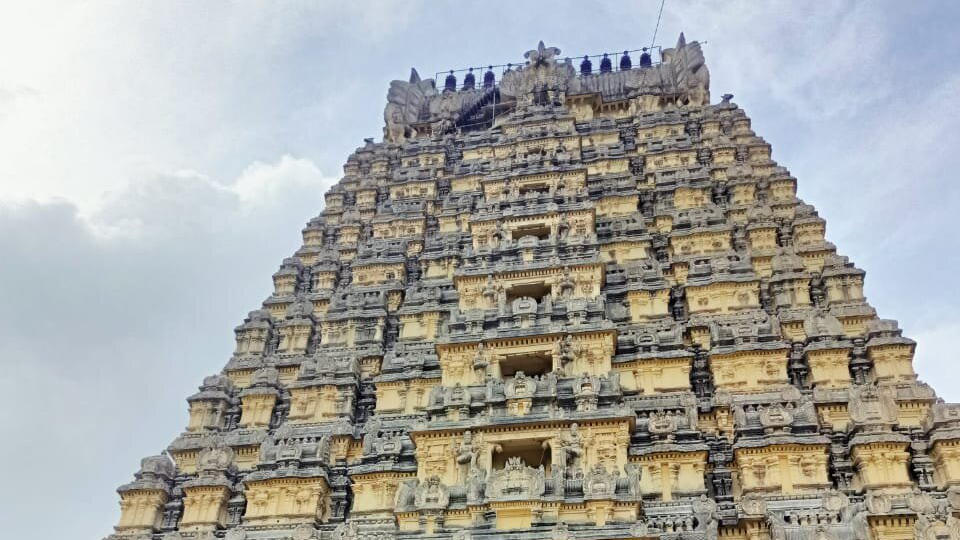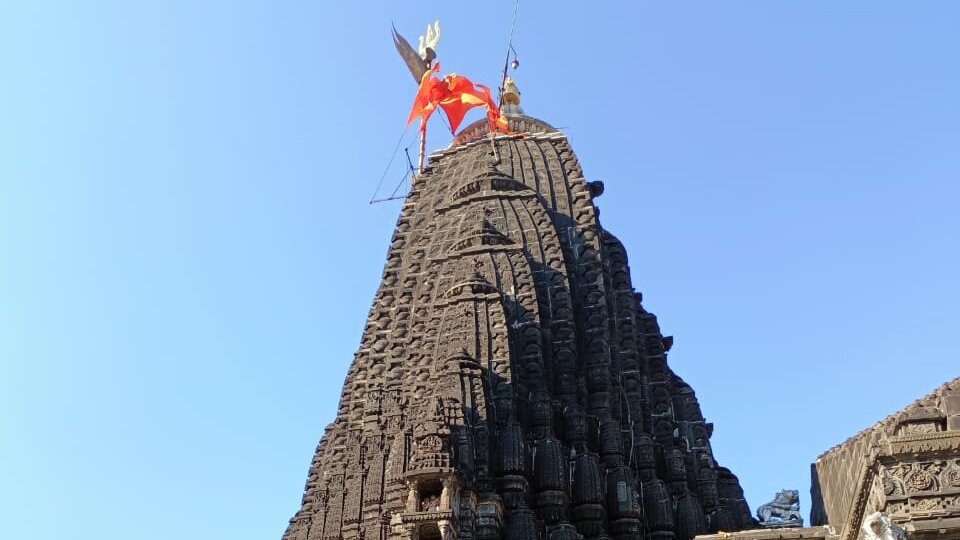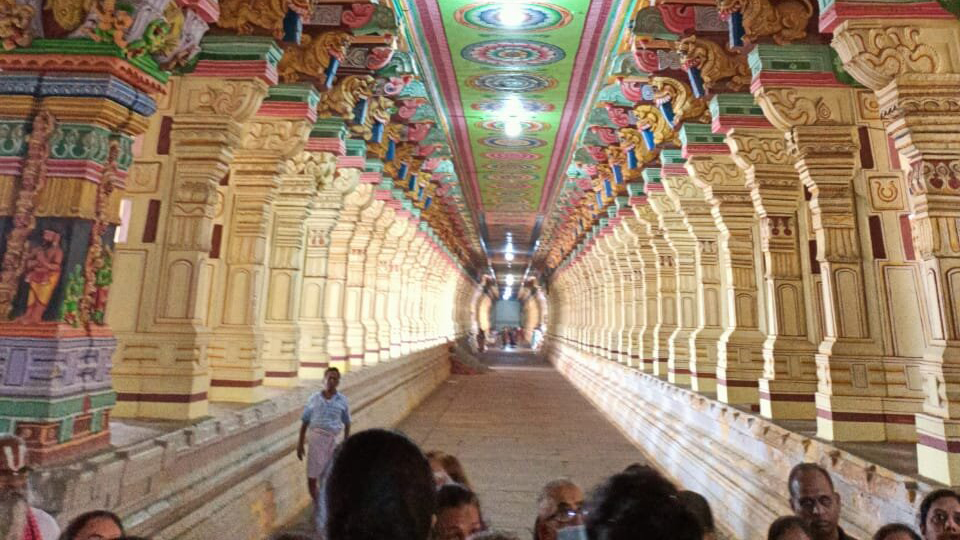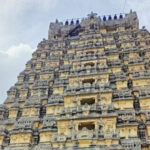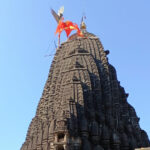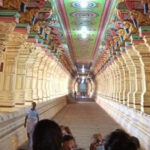Eleven Jyotirlinga Tour ( God Shiva)
Introduction
If you want to take a special tour from Mumbai to see the sacred Jyotirlingas of Lord Shiva, then this package is just right for you. This tour gives you a wonderful chance to visit these holy sites in a comfortable way. Mumbai, known as the city of dreams, is a place that combines tradition and modern life. It has a unique charm that can capture the heart of any traveler.
Booking a package is awesome because once you’re done, you can just relax. No need to stress about hotels, travel, meals, or safety – we’ve got it covered. We plan everything neatly so you can peacefully visit all those sacred spots. And guess what? If you want to add a place then it is also possible. Everyone can customize their packages. It’s super easy. Pick a date for your Eleven Jyotirlinga Tour and book with RP Adventures today.
Let’s discuss in detail the place that you will visit during the Eleven Jyotirlinga Tour.
Somnath
Somnath is a beautiful temple located in Sagar Kant, which is part of Saurashtra in the Gujarat state of India. It is one of the twelve jyotirlinga shrines of Shiva. It is believed that it was built in the 9th century. This temple is not mentioned in the book of the Sanskrit text of Hinduism, but it is mentioned in the pilgrimage site. The temple was reconstructed several times due to the Muslim invaders.
In Hindu stories, it’s said that Soma, the Moon god, lost his shine because of a curse. To get it back, he took a bath in the Sarasvati River at this special place.
In search of redemption and to regain his lost glory, Soma is said to have prayed to Lord Shiva at this very location. This temple is a timeless beauty with a rich cultural heritage and history.
Nageshwar
Nageshwar Temple is a special place in Gujarat, located along the Saurashtra coast. You can find it on the route between Gomati Dwarka and Bait Dwarka Island. This temple holds cultural and spiritual significance, attracting visitors who seek blessings and a peaceful atmosphere by the sea. It is 19 km from the city center and can be easily accessed by road.
Nageshwar is a huge statue. The temple stands tall at about 26 meters (85 feet) and has a big statue of Lord Shiva sitting. There’s also a large garden and a pond in the temple area.
According to Hindu mythology, there was a demon named Daruka who was tormenting the people and gods. Then, the Lord Shiva defeated the demon and resided in the form of the Nageshwar Jyotirlinga to protect and bless his devotees.
The temple is open from 6 AM to 9 PM every day. They do special ceremonies at this time, and anyone can join, like the morning and evening prayers. People who follow Hinduism think that sitting and thinking about Nageshwar in the temple can help you get rid of bad things in your heart and body.
Bhimashankar
Bhimashankar Temple is in a village named Bhorgiri, about 125 km away from Pune, in Maharashtra, India, amidst the Sahyadri Mountains. According to a Hindu story, there was a time when Lord Brahma and Lord Vishnu argued about who was the greatest god. To settle this, Lord Shiva turned into a bright light column and told them to find the end. They couldn’t find it. People believe that where these light columns touched the ground are the places where the jyotirlingas, like Bhimashankar, are now.
During the tour, you have to climb the 230 steps to reach the Bhimashankar Temple, and the best part is they are not too steep. Also, this place is famous for its wildlife sanctuary, home to amazing Indian giant squirrels and rare birds that are almost disappearing. It’s like a haven for unique and endangered animals and birds.
Trimbakeshwar
The Shri Trimbakeshwar Shiva Temple is a really old and important Hindu temple. It’s in Trimbak, Maharashtra, India, not too far from Nashik. What makes it special is the Linga inside the temple, which has three faces representing three important gods: Lord Brahma, Lord Vishnu, and Lord Shiva. The temple has gates on all sides—East, West, South, and North.
In spiritual terms, these directions symbolize different things like beginnings, maturity, fulfillment, and revelation. The temple is quite tall, standing at 96 feet from the ground.
The temple is also associated with the belief that praying here can absolve individuals of their sins and grant them liberation (moksha) from the cycle of birth and death (samsara).
Baidyanath Temple
The Baidyanath Temple, also known as Baba Baidyanath Dham, is a special Hindu temple devoted to Lord Shiva. You can find this temple in Deoghar, which is part of the Santhal Parganas area in the state of Jharkhand, India. People come from different places to visit this temple and seek the blessings of Lord Shiva. It’s a very important and sacred place for those who follow the Hindu religion.
A beautiful Shaktipeeth shrine of Goddess Parvati is located next to the main temple. According to Hindu mythology, while Ravana was carrying the Linga, Lord Vishnu intervened to prevent it from reaching Lanka. During the struggle, a piece of the Linga broke off and fell in Deoghar, where the Baba Baidyanath Temple now stands.
The Baba Baidyanath Temple stands as a testament to the enduring legacy of Hindu spirituality. Its history, mythology, and legends interweave to create a sacred tapestry that continues to captivate the hearts and minds of millions of devotees. As a symbol of Lord Shiva’s benevolence and healing powers, the temple serves as a place of worship and as a cultural and spiritual focal point, drawing people from all walks of life to experience the divine presence of Baba Baidyanath. Off and fell in Deoghar, where the Baba Baidyanath Temple now stands.
Mahakaleshwar
The Mahakaleshwar Temple is in the old city of Ujjain in Madhya Pradesh, India. It’s one of the 12 special Jyotirlingas dedicated to Lord Shiva. At this temple, there’s a sacred object called the Mahakal lingam, believed to be self-manifested, meaning it has a divine origin and draws power from within itself. This lingam is dedicated to Lord Shiva. Mahakaleshwar is also one of the 18 important Maha Shakti Peethas in India, connecting it to the powerful feminine energy in Hindu mythology.
There are several myths and theories about this temple. Among them, one is: It is believed that when Sati walked into the fire to rebel against her father Daksha’s objection towards her marriage with Shiva, the latter was furious and thus performed the Dance of Death, the Tandav. He was then called the Mahakal, or the one ahead and mightier than time itself.
It is recommended to stay at the temple itself or at a nearby hotel so that you get a chance to witness the mesmerizing Bhasm-Aarti.
Om kareshwar
Mandhata, also called Omkareshwar or Shivapuri and ancient Mahishmati, capital of Avanti Mahajanapada, is a riverine island in the Narmada River in Khandwa district, Madhya Pradesh, India. An interesting fact about this temple is that it is set on an island called Mandhata or Shivapuri in the Narmada River. This island is unique as it is shaped by the word Om (ॐ), which is considered the most sacred sound in Hinduism and represents Lord Shiva.
The Omkareshwar Temple and its surroundings offer stunning views of the Narmada River and the hills around it. Omkareshwar Temple is not only a place of worship but also a place of architectural and natural wonder. This is a must-visit destination for those interested in culture and history.
Grishneshwar Temple
Grishneshwar Temple, located near the renowned Ellora Caves in Maharashtra, India, stands as one of the twelve Jyotirlingas dedicated to Lord Shiva. A masterpiece of ancient architecture, the temple is rich in historical and spiritual significance. Believed to have been built in the 18th century by Ahilyabai Holkar, it exemplifies Hemadpanthi style with intricate carvings and sculptures.
The sanctum sanctorum houses the lingam, the symbol of Lord Shiva, and the temple premises are adorned with ornate carvings depicting various mythological tales. Pilgrims and tourists alike are drawn to the spiritual aura and cultural heritage of Grishneshwar Temple, making it a sacred destination for Shiva devotees and a treasure trove for history enthusiasts exploring India’s architectural marvels.
Kashi Vishwanath
The Kashi Vishwanath Temple is a special Hindu temple devoted to Lord Shiva. It’s found in Vishwanath Gali, in the city of Varanasi, Uttar Pradesh, India. Varanasi, also known as Kashi, is among the world’s oldest continuously inhabited cities. The Kashi Vishwanath Temple holds a unique and ancient status, capturing the hearts of its followers. This temple is dedicated to Lord Shiva, the deity known as both the creator and the destroyer in Hindu belief. It’s a place of deep spiritual significance for many people.
There are two main stories about the location. One is that Shiva appeared there as a column of light. The other is that he dug a trench near what was to become the Ganges, but before its existence, creating a sacred space filled with life-giving water.
The three domes of the Kashi Vishwanath Temple are coated with gold. It is thought that it will be granted if you make a wish after witnessing the golden chakra.
Rameswaram
The Ramanathaswamy Temple, dedicated to the god Shiva, is located on Rameswaram island in the state of Tamil Nadu, India. The temple is a treat for tourists with its magnificent structure, long corridors, and beautifully carved pillars. It features an impressive 38-meter ‘Gopuram’ (tower). Built-in the 12th century by rulers, the grand Ramanathaswamy Temple boasts the ‘Third Corridor,’ initiated by Sethupathy Maravar and completed by his successor, Maravar.
This corridor holds a record as the longest in Asia, spanning 197 meters from East to West and 133 meters from South to North, making it the third largest in the world. Swamy Vivekananda is said to have offered prayers here in 1897. The temple is also one of the twelve Jyotirlinga temples, where Shiva is worshipped in the form of a Jyotirlingam.
According to local legend, Shri Ram, after defeating the demon Ravana, returned to Rameswaram and India with the help of his brother Lakshman, Hanuman, and a large group of monkeys.
Mallikarjun
This temple is located in Kurnool district, Andhra Pradesh, India. According to Hindu legend, the main deity in the form of a Linga (an iconic representation of Shiva) was worshiped with Jasmine, known locally in Telugu as Mallika. This practice is said to be the reason behind the name of the presiding deity, Mallikarjuna.
This place is not only beautiful and majestic but also holds deep spiritual significance, representing the divine power of Lord Shiva and Goddess Shakti. Devotees flock to experience the bliss and spiritual glory it offers. What makes this place unique is its dual importance as both a Jyotirlinga and a Shaktipeetha temple. It is believed to be the spot where the upper lip of Goddess Sati fell, earning it the revered status of a Shakti Peetha destination.
One distinct feature of this temple is that devotees can touch the Shiva Linga and perform Abhisheka, a ritualistic pouring of milk, which is impossible in many other temples. By engaging in Abhisheka for this lovely and powerful Jyotirlingam, devotees can experience profound spiritual bliss.
The interesting fact about this temple is that people used to worship the main god with, Jasmine, and that’s why they call the linga Mallikaarjuna, after the local name for Jasmine, which is mallika. Plus, it sits on the Nallamalai hills, so you get this awesome view of everything around you when you’re there.
Outline Itinerary
Day 01: Arrival in Delhi
Day 02: Tour Briefing day in Delhi.
Day 03: Delhi to Varanasi by flight.
Day 04: Kashi Vishwanathji darshan Bodhgaya
Day 05: Bodhgaya to Baijnath Dham by road
Day 06: Bodhgaya to Baidyanath Dham by road Baijnath to Kolkata by train
Day 07: Baijnath to Kolkata by train Kolkata to Gangasagar to Kolkata
Day 08: Kolkata to Ganga Sagar to Kolkata, Kolkata to Bhubaneswar to Puri
Day 09: Kolkata to Bhubaneswar to Puri, Bhubaneswar to Hyderabad by flight
Day 10: Bhubaneswar to Hyderabad by flight Srishailam Darshan
Day 11: Srishailam darshan Tirupati darshan /Chennai to Tirupati to Chennai
Day 12: Tirupati darshan /Chennai to Tirupati to Chennai.Chennai to kanchipuram to tiruvannamalai
Day 13: Chennai to kanchipuram to tiruvannamalai Rameswaram
Day 14: Rameswaram Madurai
Day 15: Madurai Morning flight to Mumbai drive to Pune
Day 16: Morning flight to Mumbai and drive to Pune
Day 17: Bhimashankar darshan Rushmeshwar darshan
Day 18: Rushmeshwar darshan Trimbakeshwar darshan and night at Mumbai
Day 19: Trimbakeshwar darshan and night at Mumbai, Mumbai Indore by flight
Day 20: Mumbai Indore by flight Mahakal darshan local sightseeing a vajjan
Day 21: Mahakal darshan local sightseeing a vajjan Ahmedabad to Somnath
Day 22: Ahmedabad to Somnath Morning puja and darshan at Somnath afternoon going to Dwarka night stays at the hotel
Day 23: Morning puja and darshan at Somnath afternoon going to Dwarka night stay at the hotel. Morning. Dwarkadish darshan and drive to Nageshwar night stay at hotel
Day 24: Morning Dwarkadish darshan and drive to Nageshwar night stay at hotel
Day 25: Dwarka to Ahmedabad by road and fly back to Delhi
Day 26: Departure from Delhi
Alternative Pilgrimage Routes for the Eleven Jyotirlinga Tour (God Shiva)
For those seeking a spiritual journey to honor Lord Shiva but wishing to explore different paths, several sacred pilgrimages offer equally profound experiences. These routes provide opportunities to visit revered temples, engage with deep cultural traditions, and immerse in beautiful landscapes. Here are some meaningful alternatives:
- Char Dham Holy Tour – 15 Days: Embark on a sacred pilgrimage to the four holy sites of Yamunotri, Gangotri, Kedarnath, and Badrinath in Uttarakhand. This journey holds great significance for Hindu devotees and offers stunning mountain views along the way.
- Kailash Mansarovar Tour – 18 Days: A truly transformative experience, this pilgrimage takes you to Mount Kailash and the sacred Mansarovar Lake in Tibet, places that are deeply revered by Hindus, Buddhists, Jains, and Bonpos. The tour combines spiritual significance with breathtaking high-altitude landscapes.
- Nepal & Tibet Overland Tour – 18 Days: Explore the rich cultural and spiritual heritage of Nepal and Tibet, with visits to sacred sites like Lumbini (the birthplace of Buddha), the holy Mount Kailash, and ancient Tibetan monasteries. This tour offers an immersive spiritual journey across two sacred lands.
Detailed Itinerary
-
Day 01: Delhi arrival
-
Day 02: Rest Day
-
Day 03: Delhi to Varanasi by flight.
-
Day 04: Kashi Vishwanathb ji darshan Bodhgaya
-
Day 05: Bodhgaya to Baijnath Dham by road
-
Day 06: Bodhgaya to Baidyanath Dham by road Baijnath to Kolkata by train
-
Day 07: Baijnath to Kolkata by train Kolkata to Gangasagar to Kolkata
-
Day 08: Kolkata to Ganga Sagar to Kolkata, Kolkata to Bhubaneswar to Puri
-
Day 09: Kolkata to Bhubaneswar to Puri, Bhubaneswar to Hyderabad by flight.
-
Day 10: Bhubaneswar to Hyderabad by flight Srishailam darshan
-
Day 11: Srishailam darshan Tirupati darshan /Chennai to Tirupati to Chennai
-
Day 12: Tirupati darshan /Chennai to Tirupati to Chennai. Chennai to Kanchipuram to Tiruvannamalai
-
Day 13: Chennai to Kanchipuram to Tiruvannamalai Rameswaram
-
Day 14: Rameswaram Madurai
-
Day 15: Madurai Morning flight to Mumbai drive to Pune
-
Day 16: Morning flight to Mumbai and drive to Pune.
-
Day 17: Bhimashankar darshan Rushmeshwar darshan
-
Day 18: Rushmeshwar darshan Trimbakeshwar darshan and night at Mumbai
-
Day 19: Trimbakeshwar darshan and night at Mumbai, Mumbai Indore by flight
-
Day 20: Mumbai Indore by flight Mahakal darshan local sightseeing a vajan
-
Day 21: Mahakal darshan local sightseeing a vajan Ahmedabad to Somnath
-
Day 22: Ahmedabad to Somnath Morning puja and darshan at Somnath afternoon going to Dwarka night stays at the hotel.
-
Day 23: Morning puja and darshan at Somnath afternoon going to Dwarka night stay at the hotel. Morning Dwarkadish darshan and drive to Nageshwar night stay at hotel.
-
Day 24: Morning Dwarkadish darshan and drive to Nageshwar night stay at hotel.
-
Day 25: Dwarka to Ahmedabad by road and fly back to Delhi.
-
Day 26: Departure from Delhi
What's included
- Food and Accommodations During the Jyotirlinga Tour
- Domestic Flight ticket
- Train & Tourist bus ticket
- Stay at the luxurious five-star hotel
- Tour Guides and helpers.
What's not included
- International flight ticket
- Personal expenses
- Personal puja and Dachena
- Guide, Helper, and Driver Tips
FAQs of Eleven Jyotirlinga Tour ( God Shiva)
-
How to book 11 Jyotirlinga yatra tour packages?
Booking your spot for the 11 Jyotirlinga Yatra tour is super easy. Just go to our website and click on the "Book" button. You can also send us an email or a message on WhatsApp using the contact details provided on our website. -
What is the meaning of Jyotirlinga?
Jyotirlinga means the 'Radiant sign of Lord Shiva'. -
What are the Jyotirlingas temple timings?
The timings for most Jyotirlinga temples typically run from 5 in the morning until 9:30 at night -
What is the best time for the Jyotirlinga Darshan?
Although you can schedule your trip to Maharashtra at any time of year, October through March is the ideal time to go there -
Why are ladies not allowed to see Bhasma Aarti?
The tradition of not looking at the Shiva Lingam during Bhasma Arti is based on the belief that Lord Shiva is the embodiment of supreme consciousness, and looking directly at him can cause a person to lose awareness and become absorbed in the divine. -
Which is the most difficult jyotirlinga tour?
Shrikhand Mahadev Kailash, also known as Shikhar Kailash, is a special place for Hindu pilgrims in Kullu, Himachal Pradesh, India. People believe that it's where Lord Shiva and his wife, Goddess Parvati, live. Going there involves a challenging trek, known as one of the hardest in India. People often make this journey for a spiritual experience and the adventure of tackling tough terrain in the Himalayas. -
Why do we pour milk on Shivling?
Milk is offered to Shiva Linga to keep the Shiva lingam cool and to protect it from atmospheric conditions. Milk forms a protective layer on Shiva lingam and prevents it from erosion. -
Why is Kedarnath Shivling different?
The Shivling at Kedarnath is not man-made but is believed to be a natural formation. -
Can an unmarried woman touch Shivling?
There is no such restriction for anyone to touch Shivling. -
Things required for the Abhishekam?
Water/sandalwood powder/kumkum/turmeric/honey/curd or tulsi water.
Trip You May Like
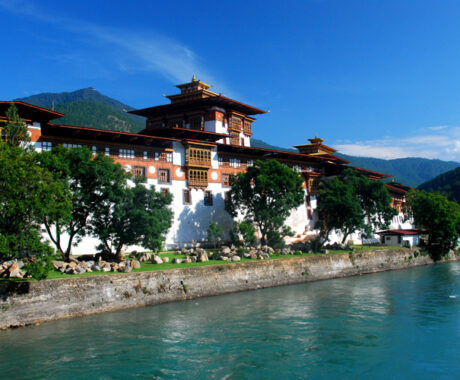
Bhutan Tour 5 Nights 6 Days
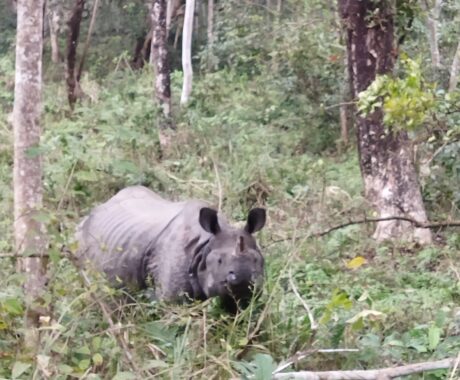
Kathmandu, Pokhara, Lumbini & Chitwan Tour
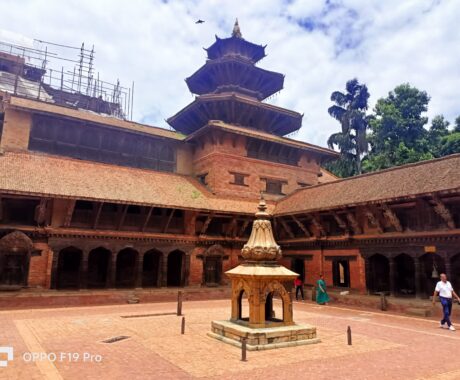
Patan City Tour

